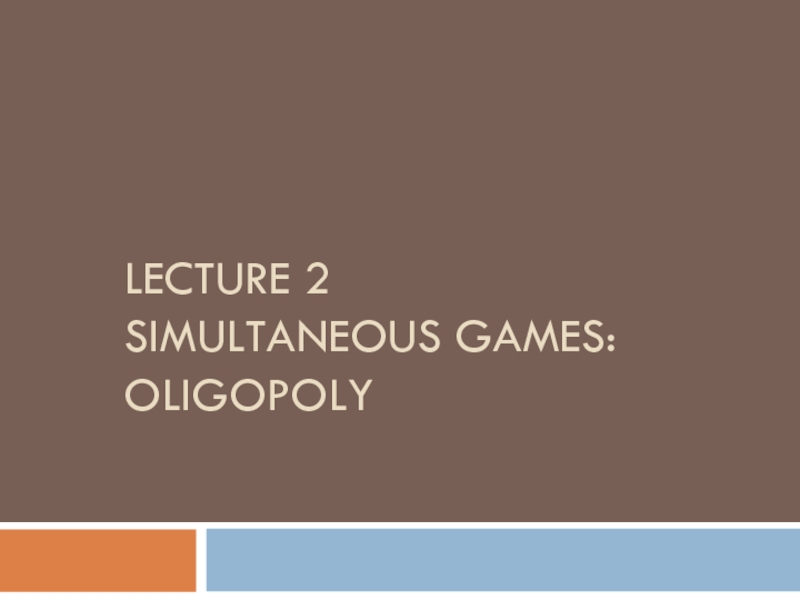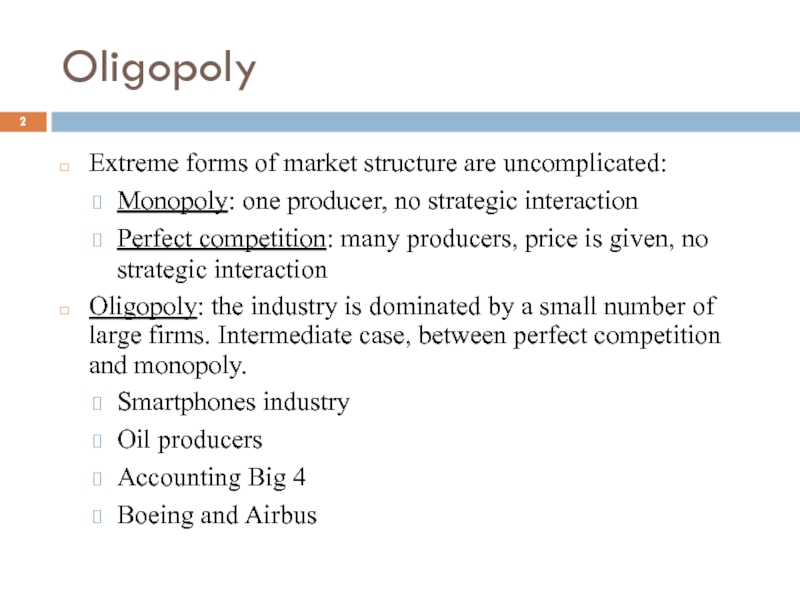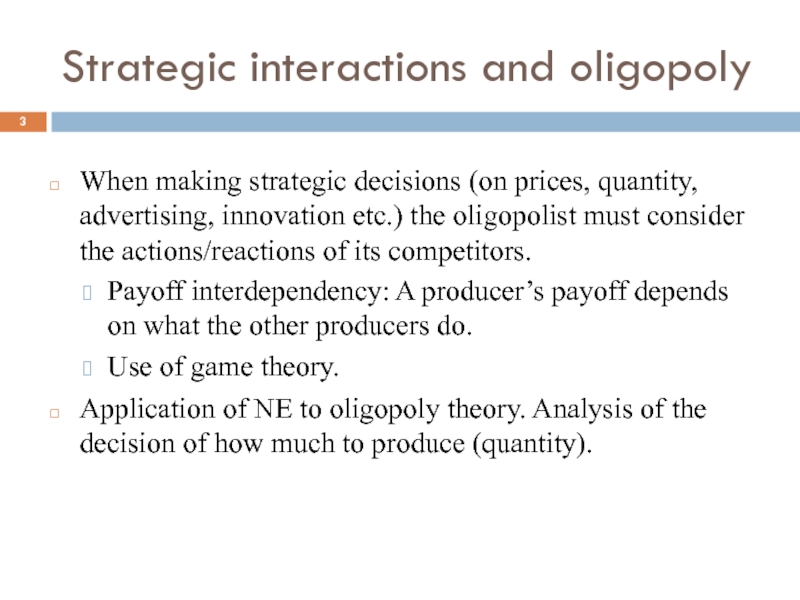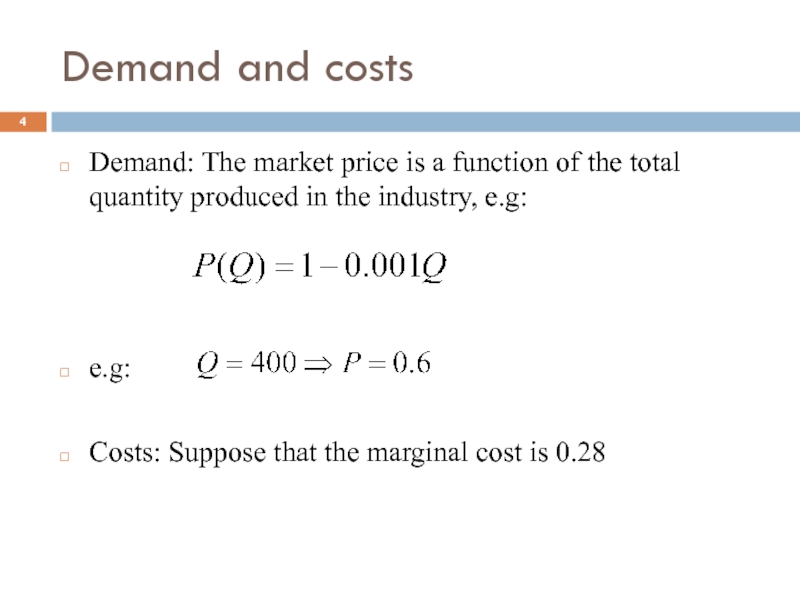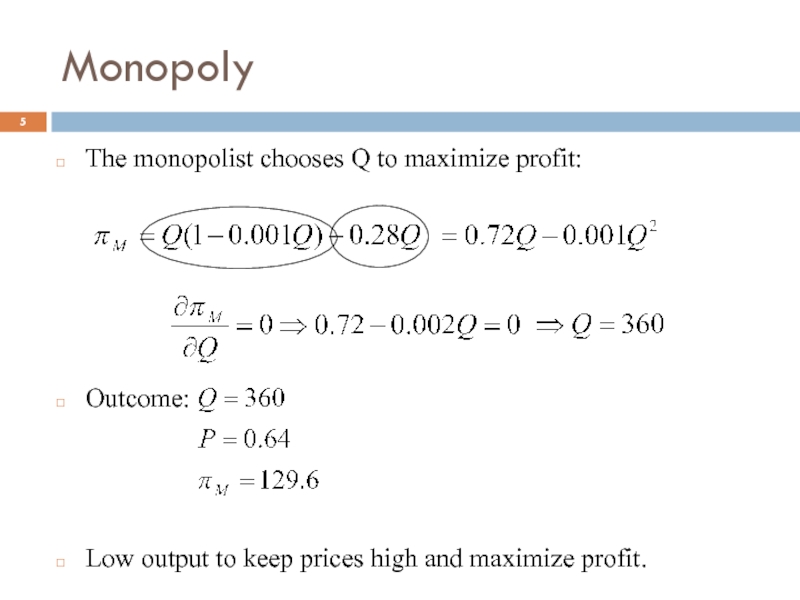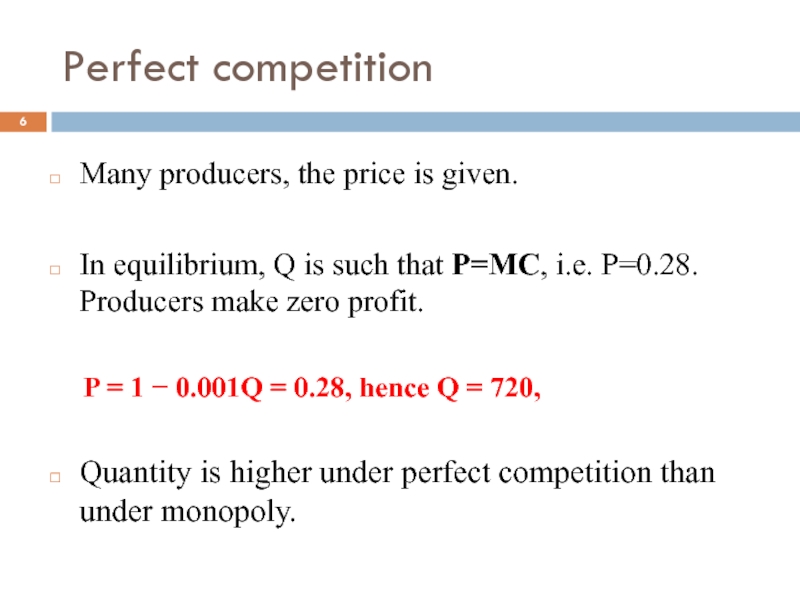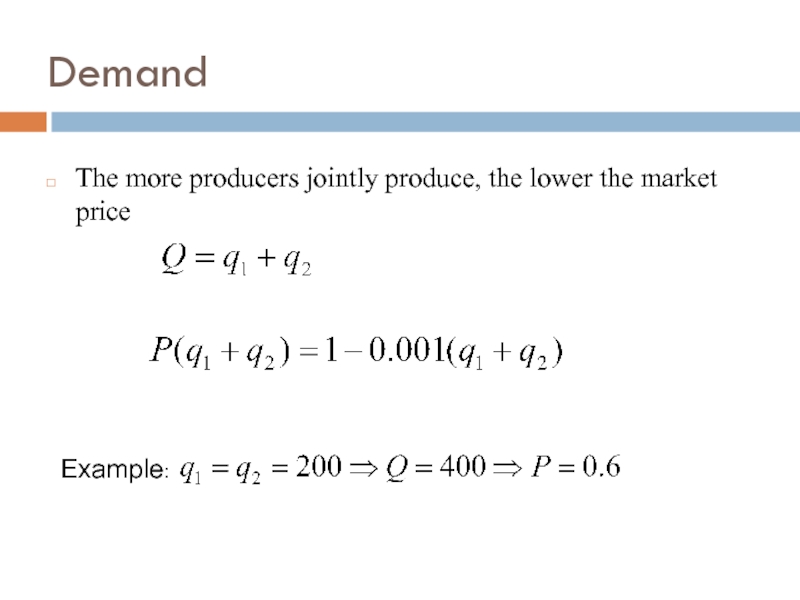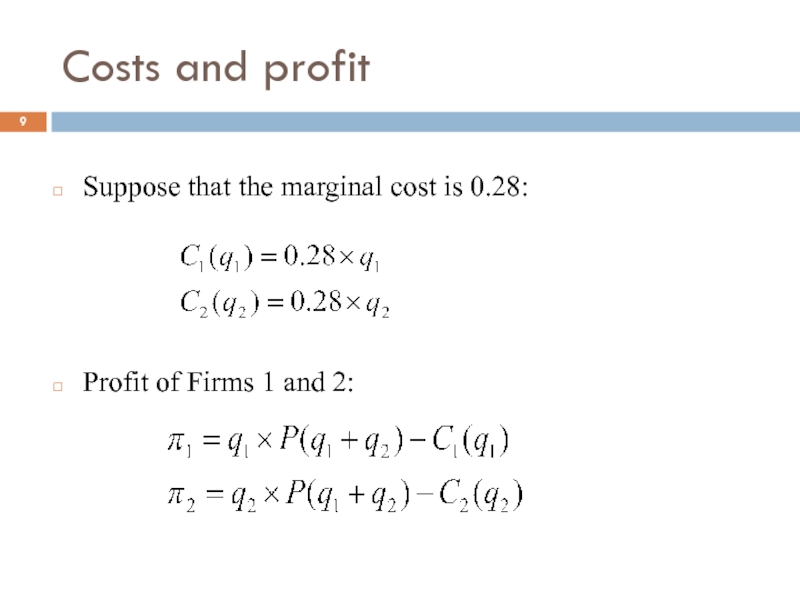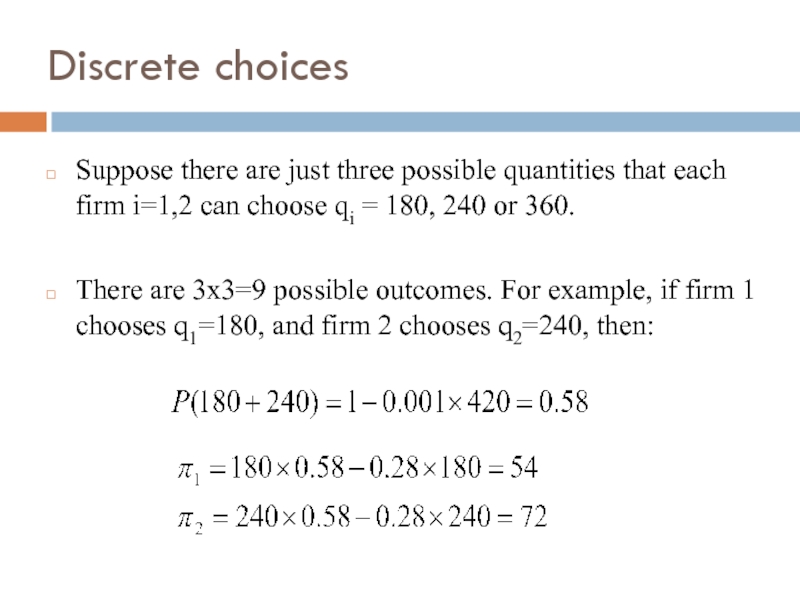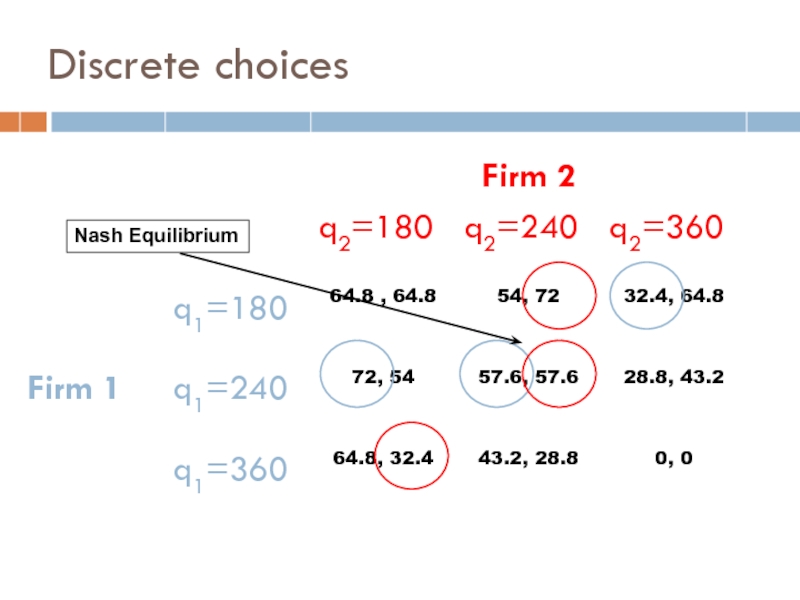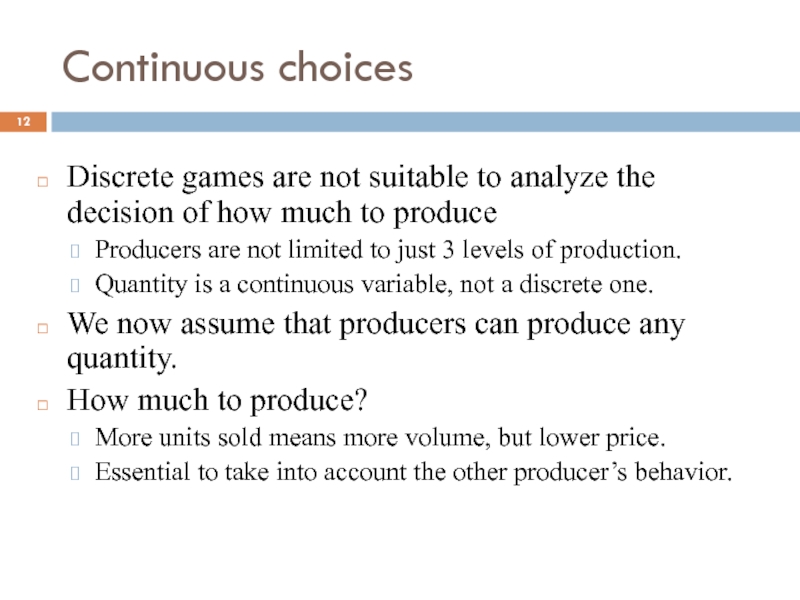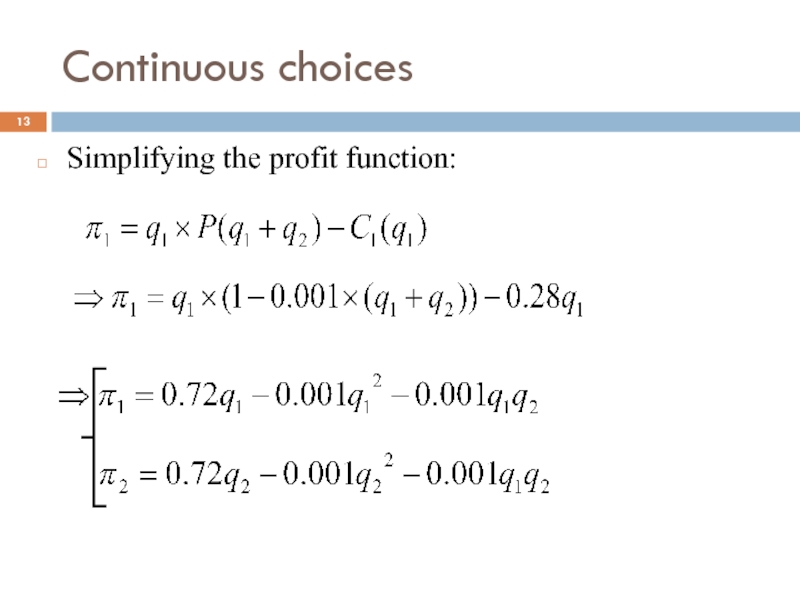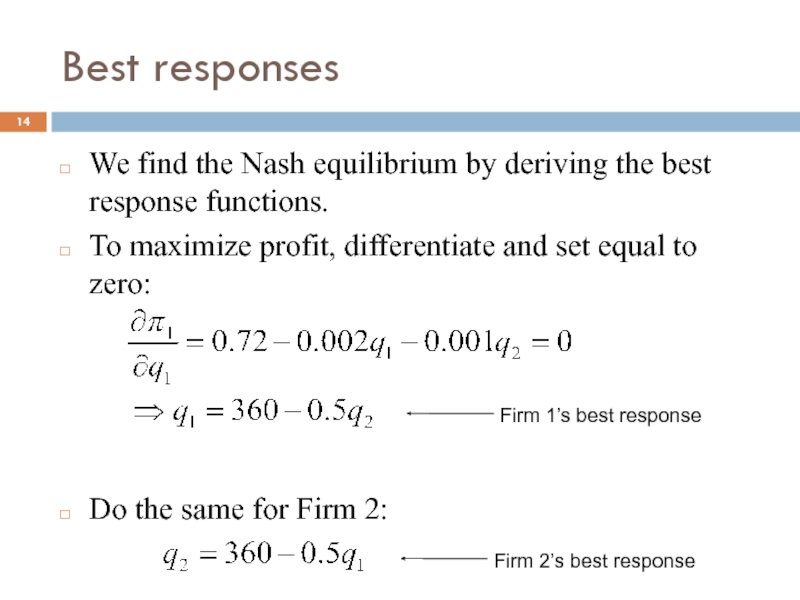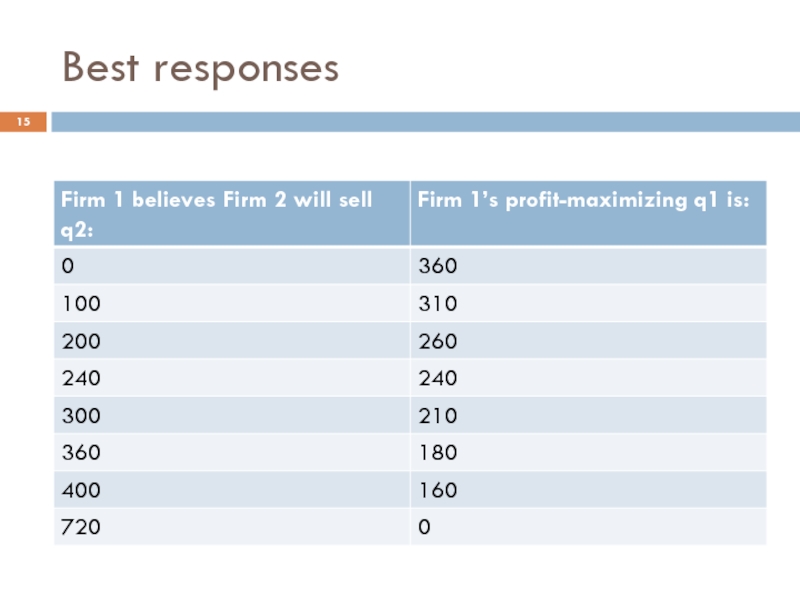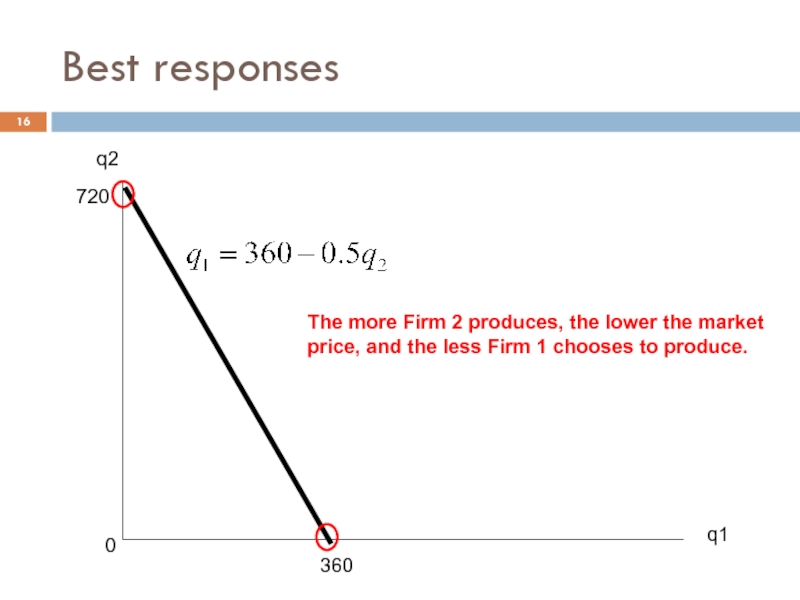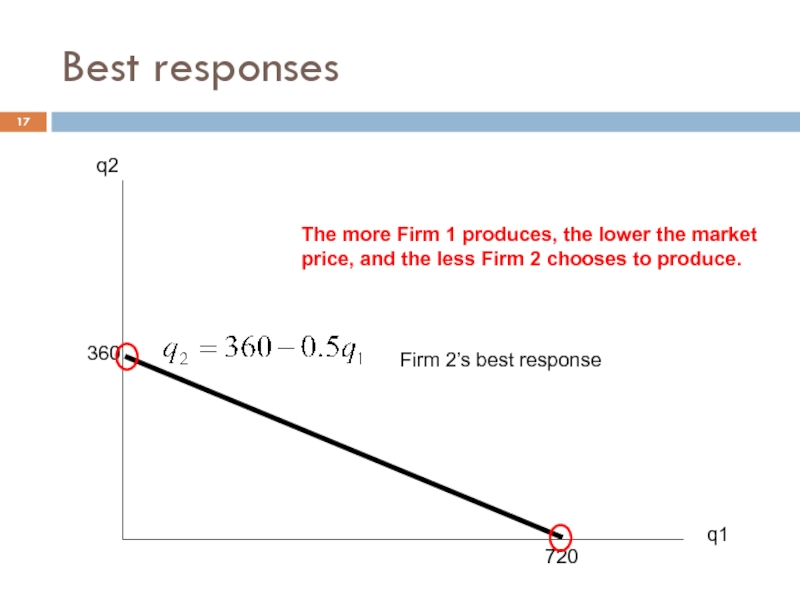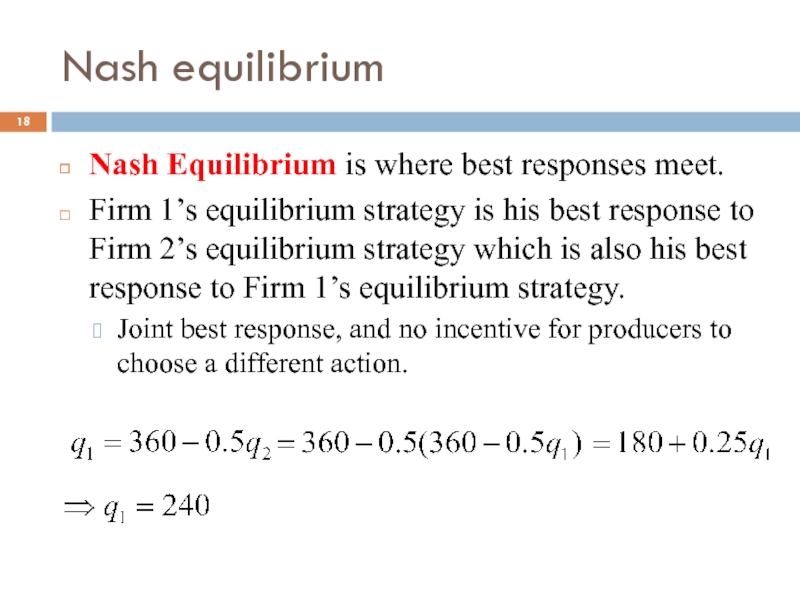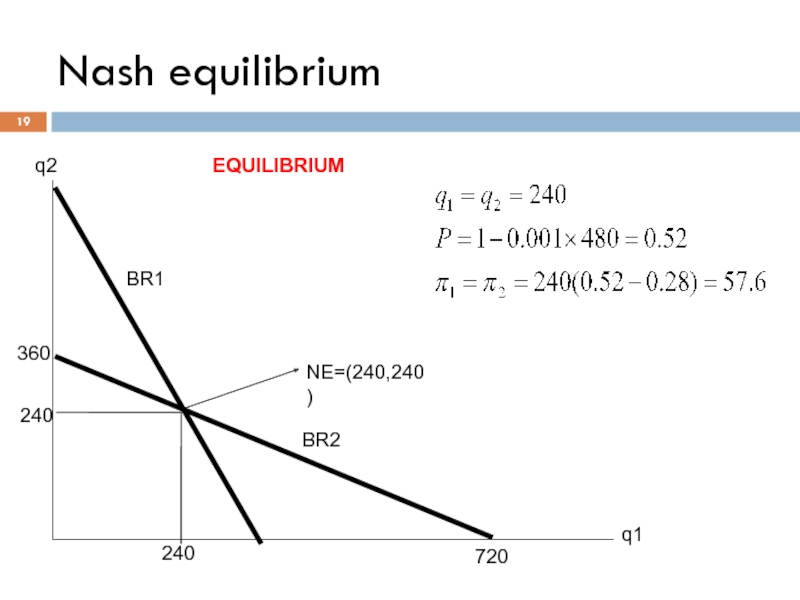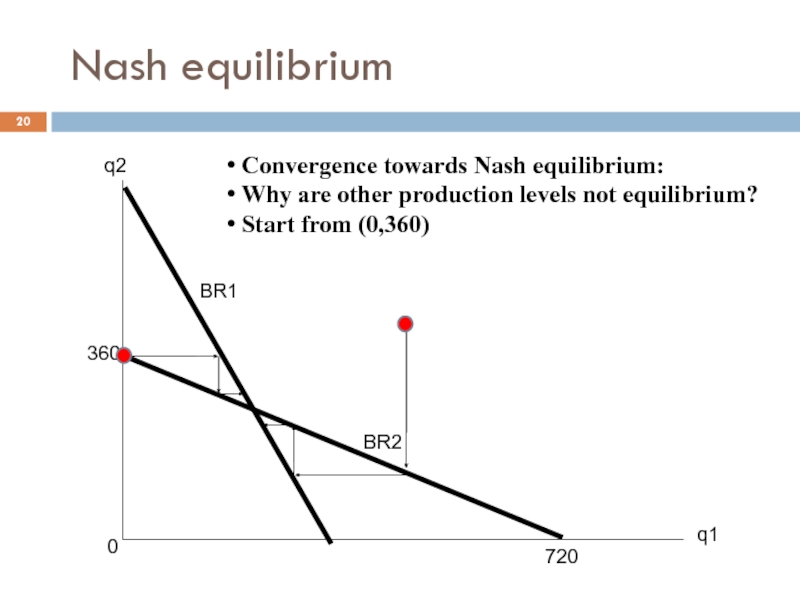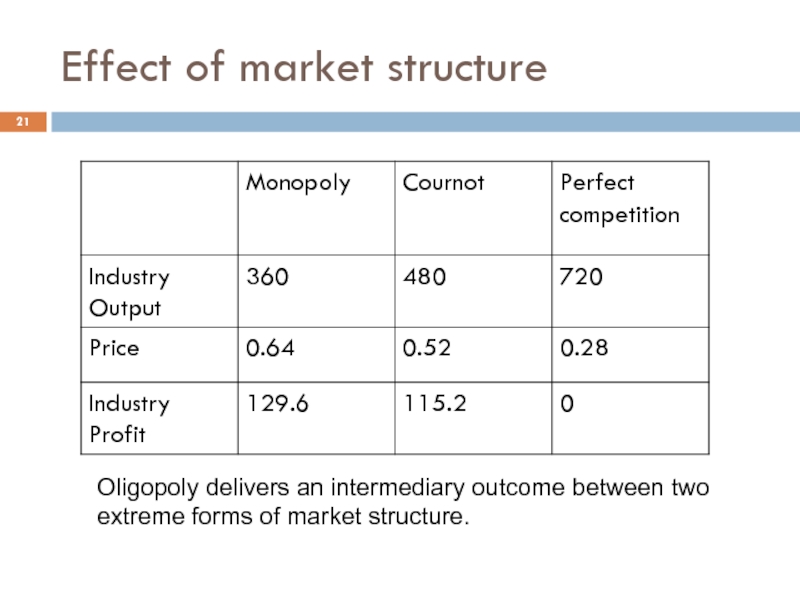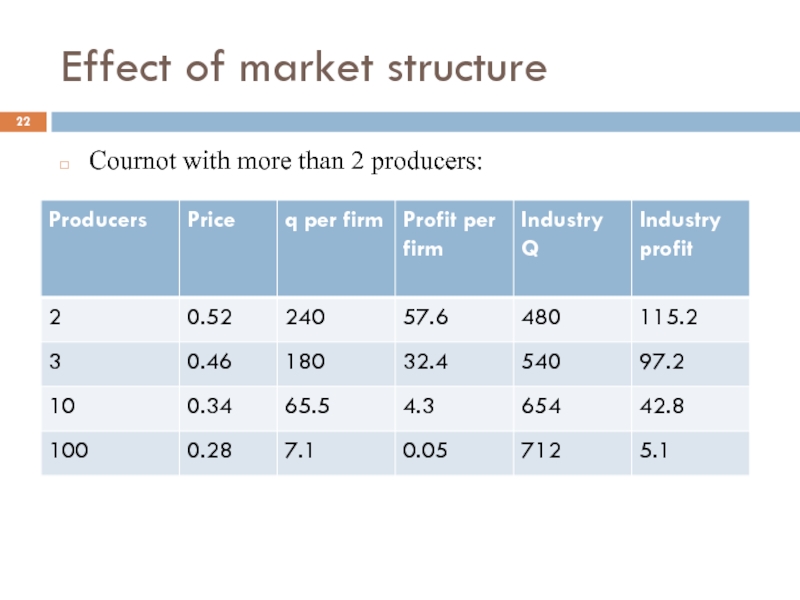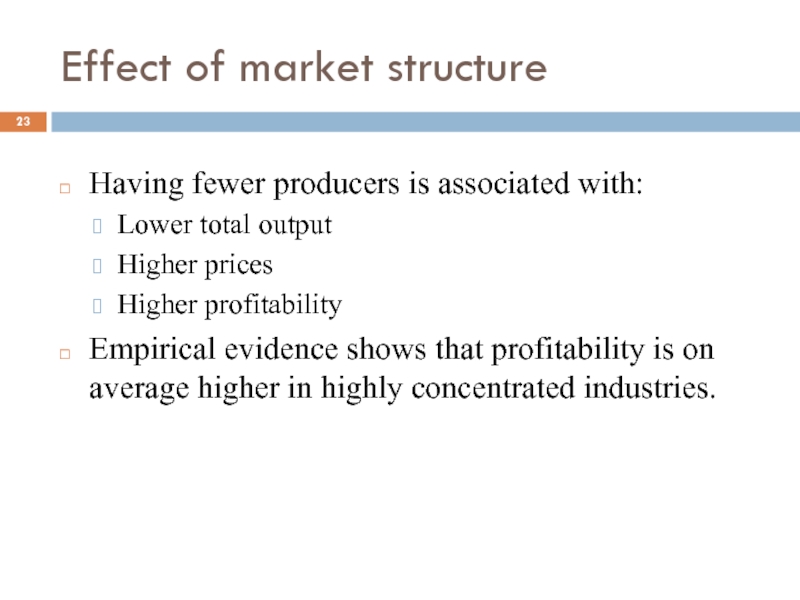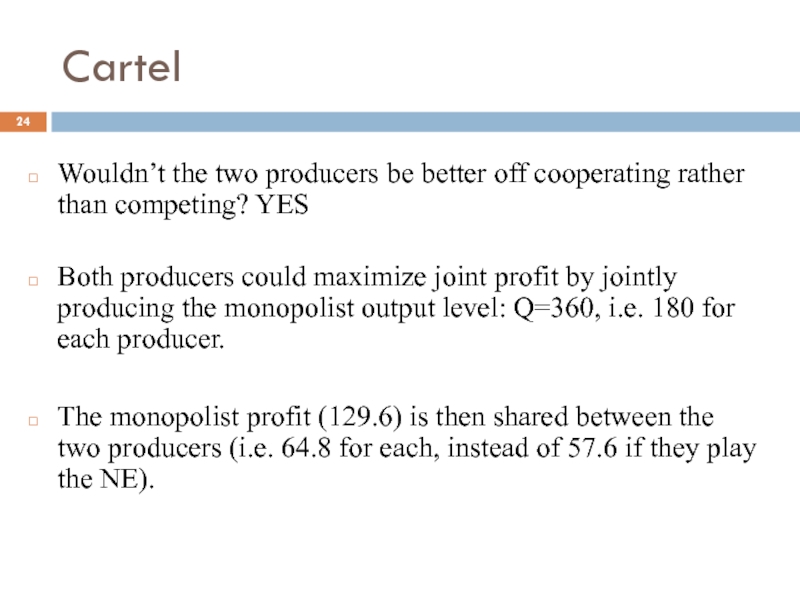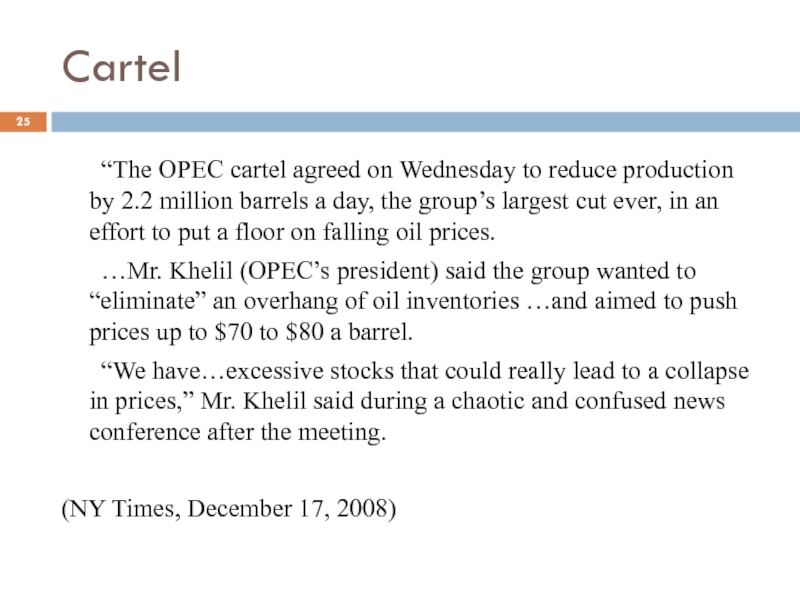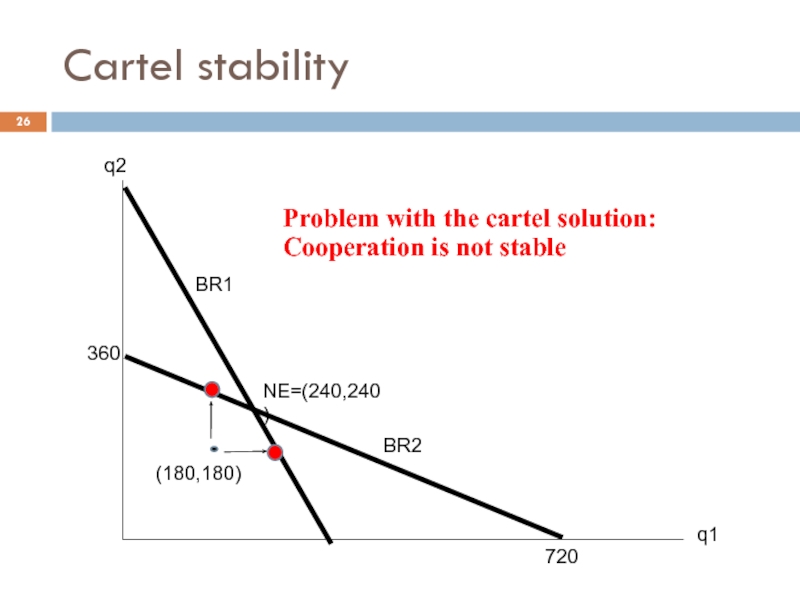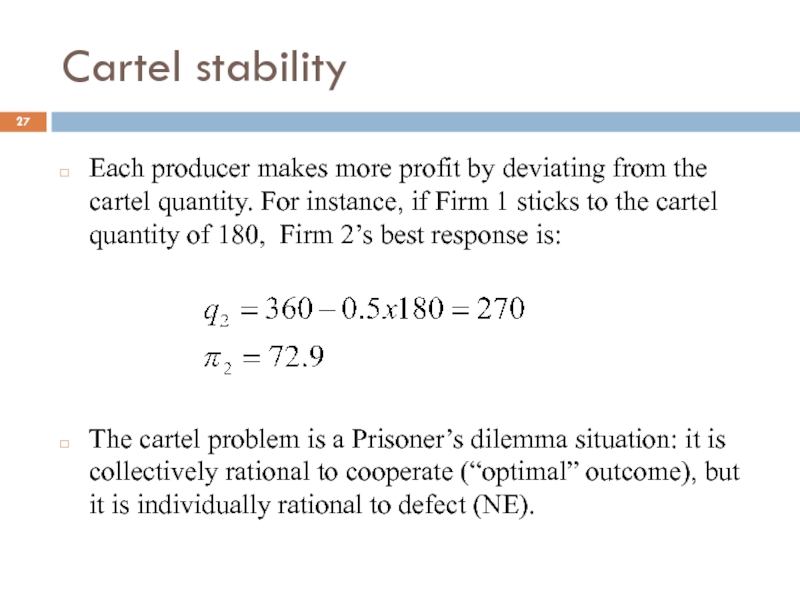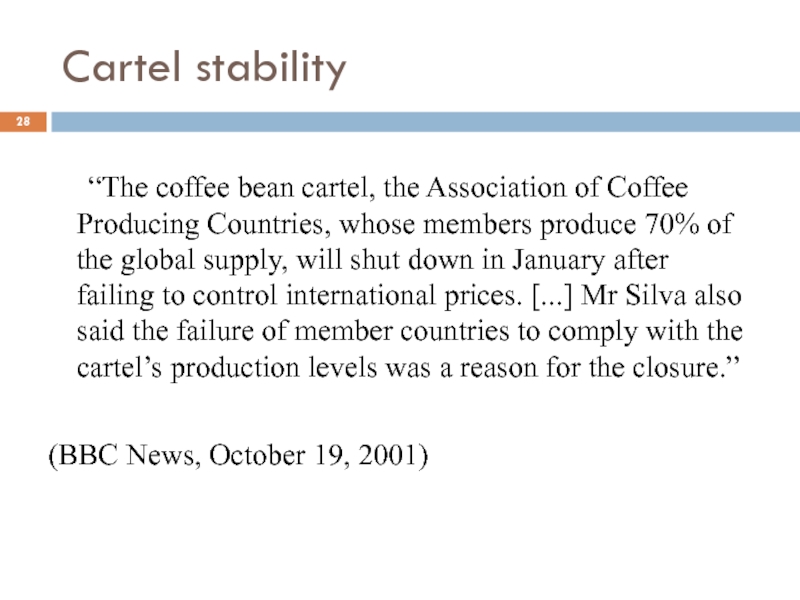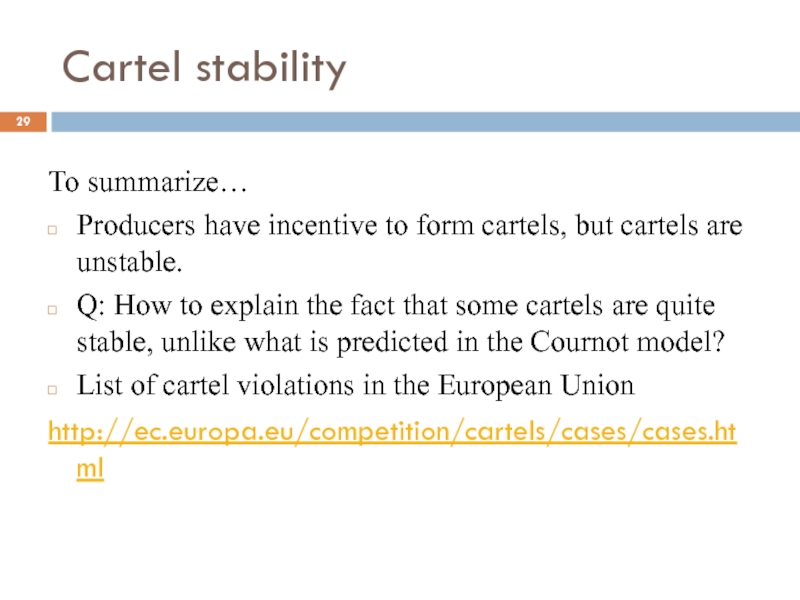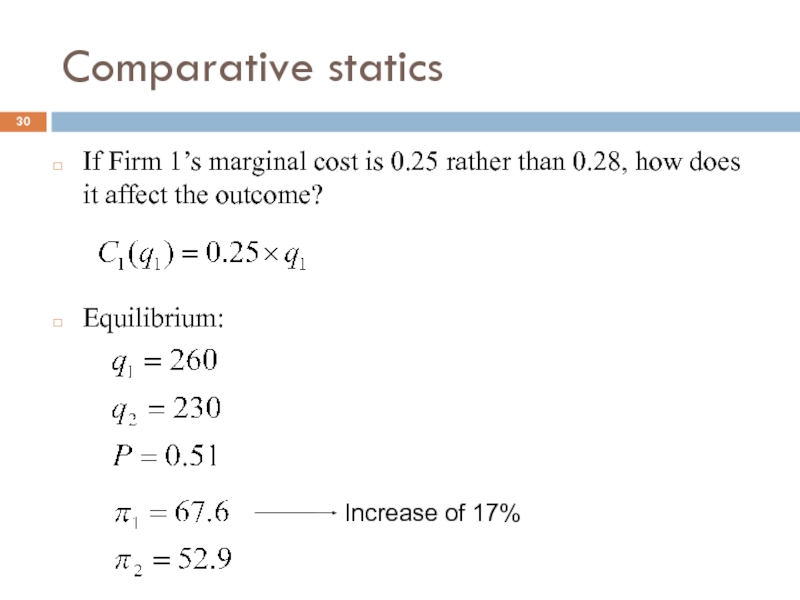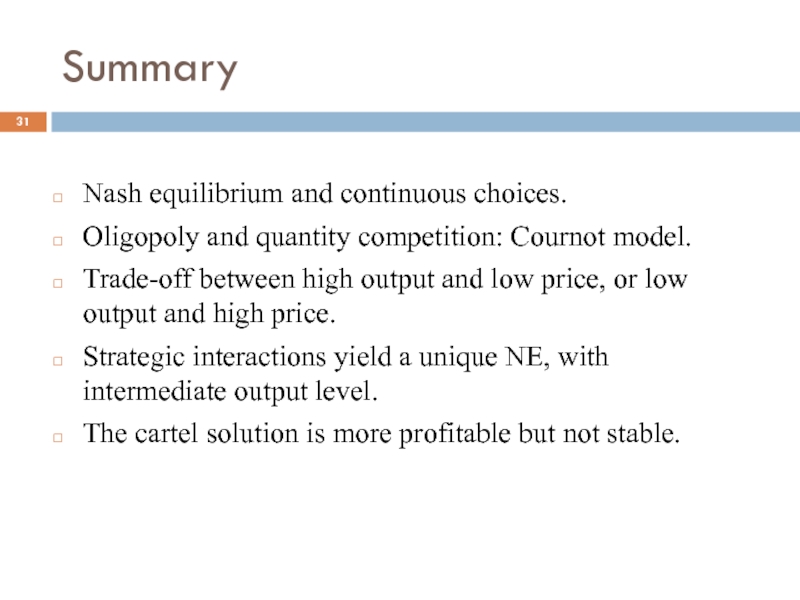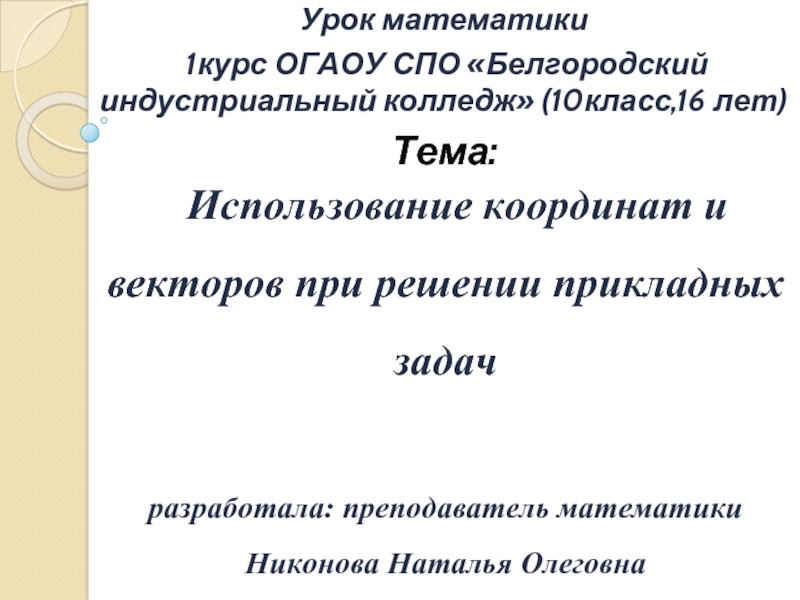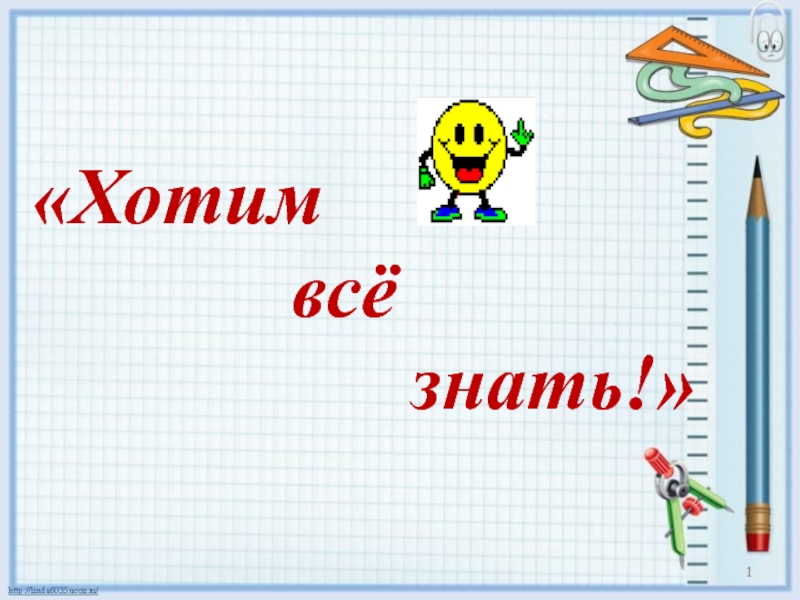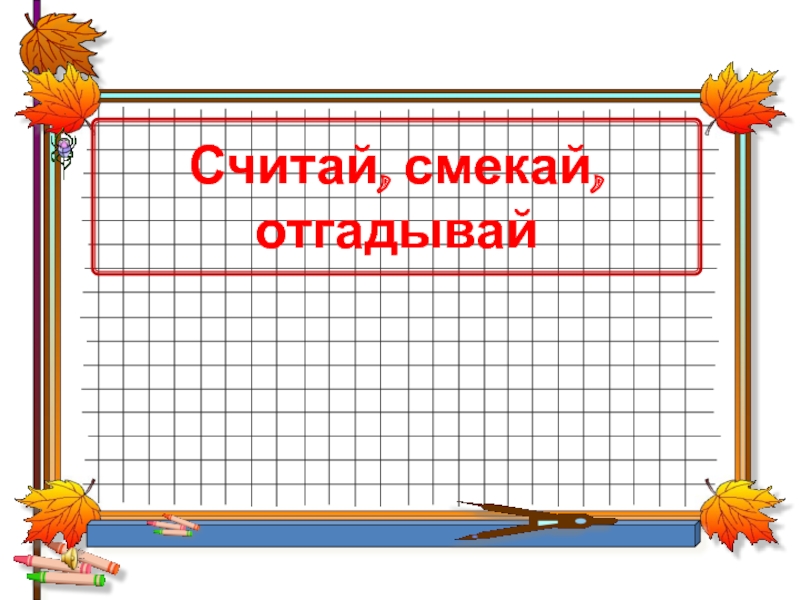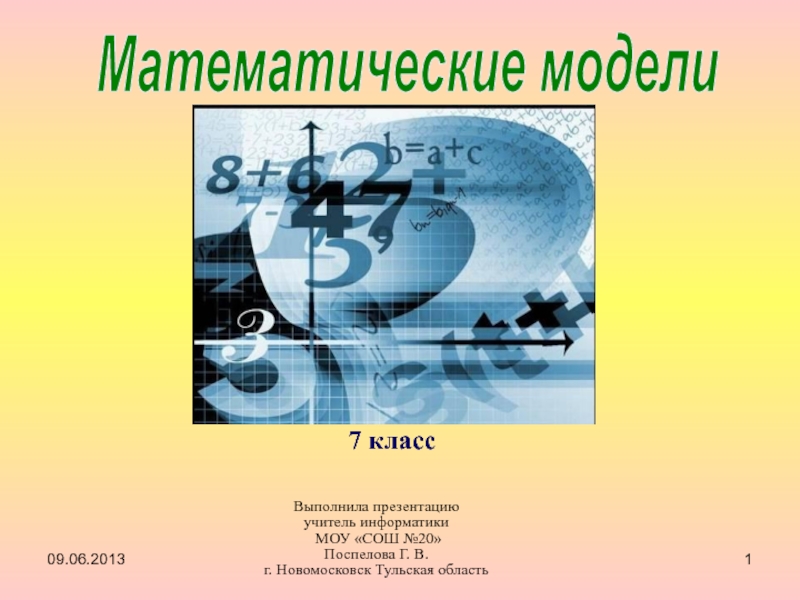- Главная
- Разное
- Дизайн
- Бизнес и предпринимательство
- Аналитика
- Образование
- Развлечения
- Красота и здоровье
- Финансы
- Государство
- Путешествия
- Спорт
- Недвижимость
- Армия
- Графика
- Культурология
- Еда и кулинария
- Лингвистика
- Английский язык
- Астрономия
- Алгебра
- Биология
- География
- Детские презентации
- Информатика
- История
- Литература
- Маркетинг
- Математика
- Медицина
- Менеджмент
- Музыка
- МХК
- Немецкий язык
- ОБЖ
- Обществознание
- Окружающий мир
- Педагогика
- Русский язык
- Технология
- Физика
- Философия
- Химия
- Шаблоны, картинки для презентаций
- Экология
- Экономика
- Юриспруденция
Simultaneous games. Oligopoly. (Lecture 2) презентация
Содержание
- 1. Simultaneous games. Oligopoly. (Lecture 2)
- 2. Oligopoly Extreme forms of market structure are
- 3. Strategic interactions and oligopoly When making strategic
- 4. Demand and costs Demand: The market price
- 5. Monopoly The monopolist chooses Q to maximize
- 6. Perfect competition Many producers, the price is
- 7. The Cournot model What is the Cournot
- 8. Demand The more producers jointly produce, the lower the market price Example:
- 9. Costs and profit Suppose that the marginal
- 10. Discrete choices Suppose there are just three
- 11. Discrete choices Nash Equilibrium
- 12. Continuous choices Discrete games are not
- 13. Continuous choices Simplifying the profit function:
- 14. Best responses We find the Nash equilibrium
- 15. Best responses
- 16. Best responses 360 720 q1 q2 0
- 17. 360 720 q1 q2 Best responses Firm
- 18. Nash equilibrium Nash Equilibrium is where best
- 19. 360 720 q1 q2 NE=(240,240) Nash equilibrium EQUILIBRIUM BR1 BR2 240 240
- 20. Nash equilibrium 360 720 q1 q2
- 21. Effect of market structure Oligopoly delivers an
- 22. Effect of market structure Cournot with more than 2 producers:
- 23. Effect of market structure Having fewer producers
- 24. Wouldn’t the two producers be better off
- 25. Cartel “The OPEC cartel agreed on Wednesday
- 26. 360 720 q1 q2 NE=(240,240) Cartel stability
- 27. Cartel stability Each producer makes more profit
- 28. Cartel stability “The coffee bean cartel, the
- 29. Cartel stability To summarize… Producers have incentive
- 30. Comparative statics If Firm 1’s marginal cost
- 31. Summary Nash equilibrium and continuous choices. Oligopoly
Слайд 2Oligopoly
Extreme forms of market structure are uncomplicated:
Monopoly: one producer, no strategic
Perfect competition: many producers, price is given, no strategic interaction
Oligopoly: the industry is dominated by a small number of large firms. Intermediate case, between perfect competition and monopoly.
Smartphones industry
Oil producers
Accounting Big 4
Boeing and Airbus
Слайд 3Strategic interactions and oligopoly
When making strategic decisions (on prices, quantity, advertising,
Payoff interdependency: A producer’s payoff depends on what the other producers do.
Use of game theory.
Application of NE to oligopoly theory. Analysis of the decision of how much to produce (quantity).
Слайд 4Demand and costs
Demand: The market price is a function of the
e.g:
Costs: Suppose that the marginal cost is 0.28
Слайд 5Monopoly
The monopolist chooses Q to maximize profit:
Outcome:
Low output to keep prices
Слайд 6Perfect competition
Many producers, the price is given.
In equilibrium, Q is such
P = 1 − 0.001Q = 0.28, hence Q = 720,
Quantity is higher under perfect competition than under monopoly.
Слайд 7The Cournot model
What is the Cournot model?
Model of industry structure where
Two producers, Firm 1 and Firm 2 (oligopoly).
Produce the same good
Sell on the same market
One market price, which depends on the total output
No entry
Simultaneous game
Example: oil producing countries
Слайд 10Discrete choices
Suppose there are just three possible quantities that each firm
There are 3x3=9 possible outcomes. For example, if firm 1 chooses q1=180, and firm 2 chooses q2=240, then:
Слайд 12Continuous choices
Discrete games are not suitable to analyze the decision of
Producers are not limited to just 3 levels of production.
Quantity is a continuous variable, not a discrete one.
We now assume that producers can produce any quantity.
How much to produce?
More units sold means more volume, but lower price.
Essential to take into account the other producer’s behavior.
Слайд 14Best responses
We find the Nash equilibrium by deriving the best response
To maximize profit, differentiate and set equal to zero:
Do the same for Firm 2:
Firm 1’s best response
Firm 2’s best response
Слайд 16Best responses
360
720
q1
q2
0
The more Firm 2 produces, the lower the market
price, and
Слайд 17360
720
q1
q2
Best responses
Firm 2’s best response
The more Firm 1 produces, the lower
price, and the less Firm 2 chooses to produce.
Слайд 18Nash equilibrium
Nash Equilibrium is where best responses meet.
Firm 1’s equilibrium strategy
Joint best response, and no incentive for producers to choose a different action.
Слайд 20Nash equilibrium
360
720
q1
q2
Convergence towards Nash equilibrium:
Why are other production levels
Start from (0,360)
BR1
BR2
0
Слайд 21Effect of market structure
Oligopoly delivers an intermediary outcome between two
extreme forms
Слайд 23Effect of market structure
Having fewer producers is associated with:
Lower total output
Higher
Higher profitability
Empirical evidence shows that profitability is on average higher in highly concentrated industries.
Слайд 24Wouldn’t the two producers be better off cooperating rather than competing?
Both producers could maximize joint profit by jointly producing the monopolist output level: Q=360, i.e. 180 for each producer.
The monopolist profit (129.6) is then shared between the two producers (i.e. 64.8 for each, instead of 57.6 if they play the NE).
Cartel
Слайд 25Cartel
“The OPEC cartel agreed on Wednesday to reduce production by 2.2
…Mr. Khelil (OPEC’s president) said the group wanted to “eliminate” an overhang of oil inventories …and aimed to push prices up to $70 to $80 a barrel.
“We have…excessive stocks that could really lead to a collapse in prices,” Mr. Khelil said during a chaotic and confused news conference after the meeting.
(NY Times, December 17, 2008)
Слайд 26360
720
q1
q2
NE=(240,240)
Cartel stability
BR1
BR2
(180,180)
Problem with the cartel solution:
Cooperation is not stable
Слайд 27Cartel stability
Each producer makes more profit by deviating from the cartel
The cartel problem is a Prisoner’s dilemma situation: it is collectively rational to cooperate (“optimal” outcome), but it is individually rational to defect (NE).
Слайд 28Cartel stability
“The coffee bean cartel, the Association of Coffee Producing Countries,
(BBC News, October 19, 2001)
Слайд 29Cartel stability
To summarize…
Producers have incentive to form cartels, but cartels are
Q: How to explain the fact that some cartels are quite stable, unlike what is predicted in the Cournot model?
List of cartel violations in the European Union
http://ec.europa.eu/competition/cartels/cases/cases.html
Слайд 30Comparative statics
If Firm 1’s marginal cost is 0.25 rather than 0.28,
Equilibrium:
Increase of 17%
Слайд 31Summary
Nash equilibrium and continuous choices.
Oligopoly and quantity competition: Cournot model.
Trade-off between
Strategic interactions yield a unique NE, with intermediate output level.
The cartel solution is more profitable but not stable.
